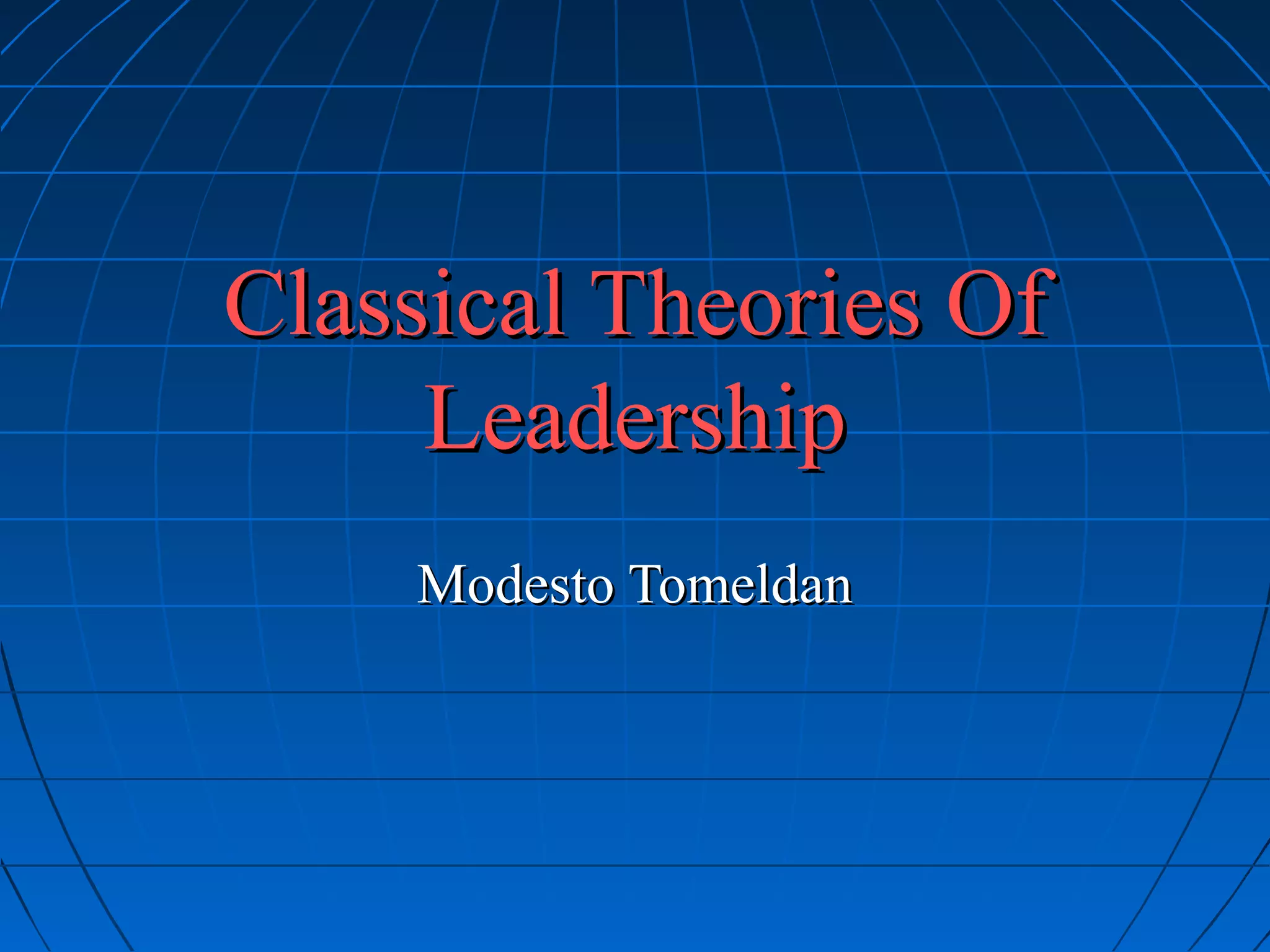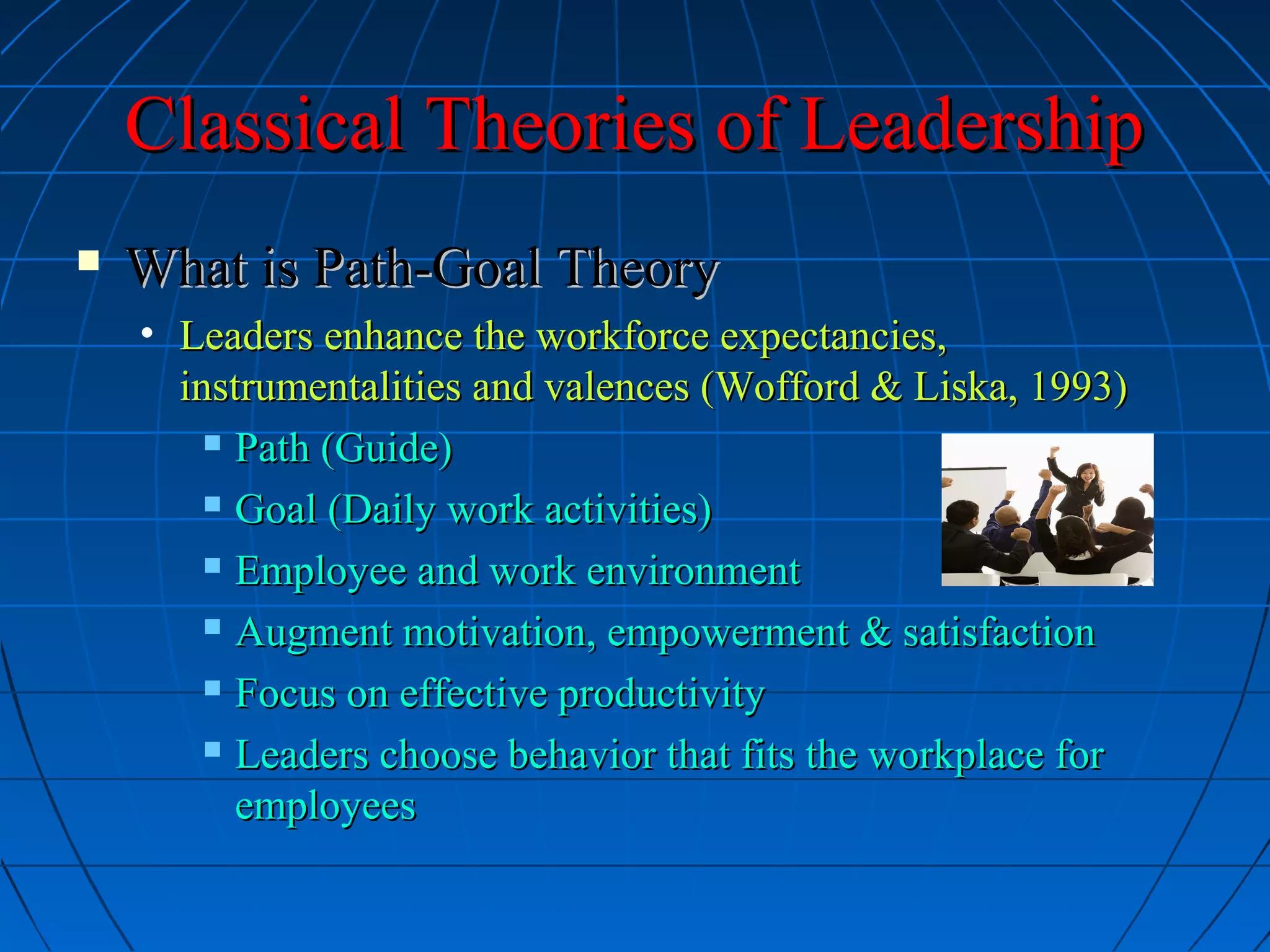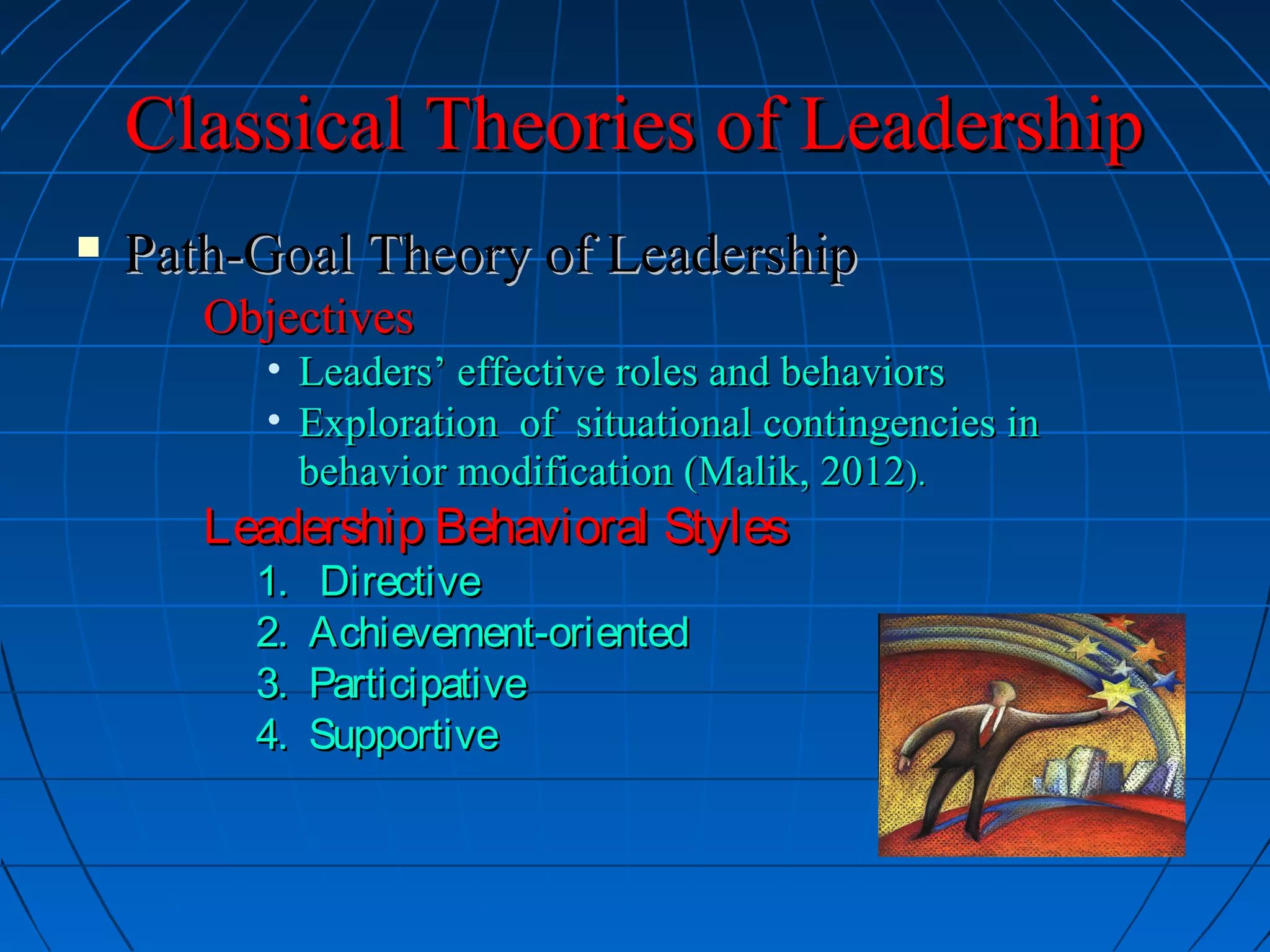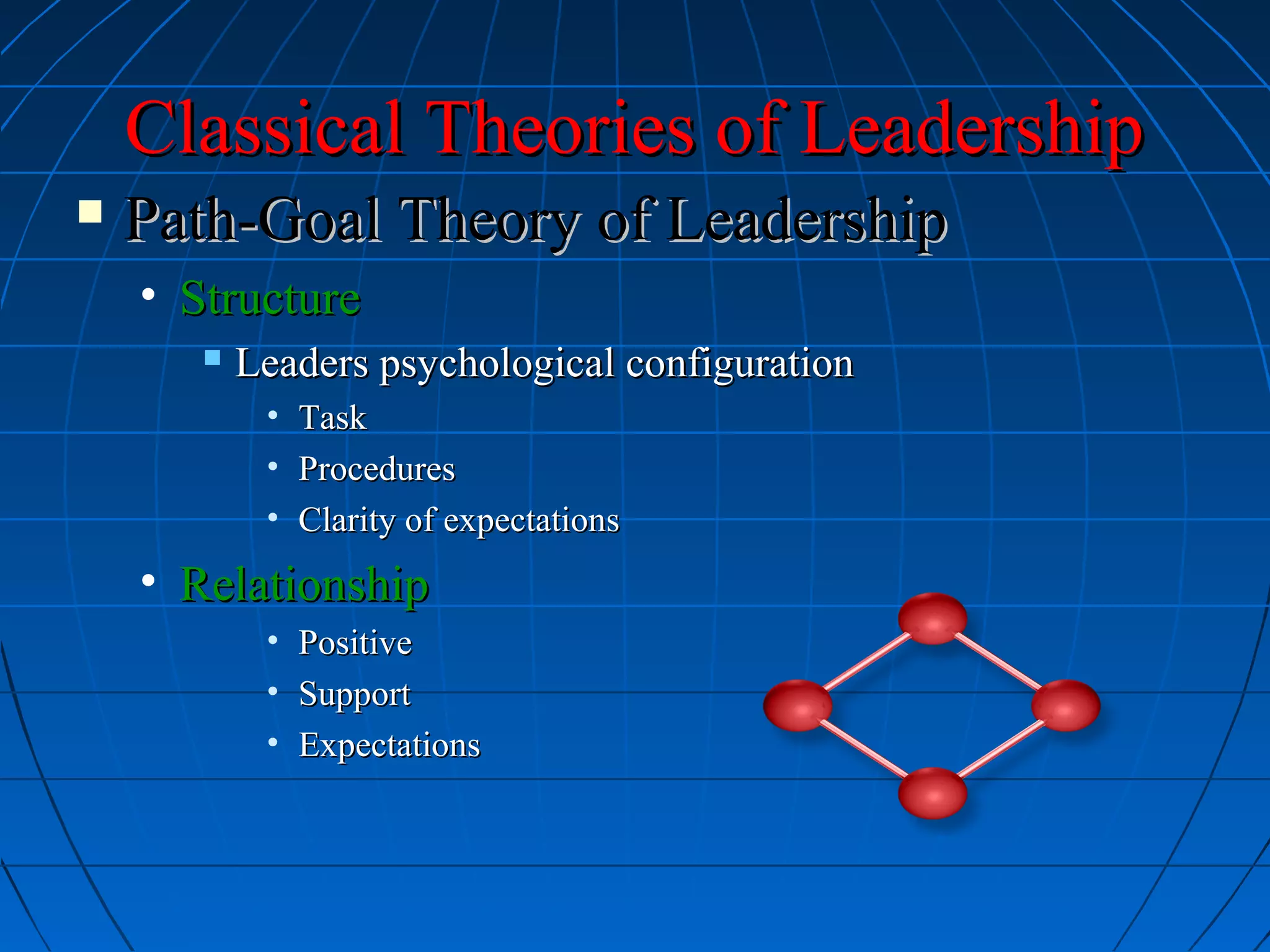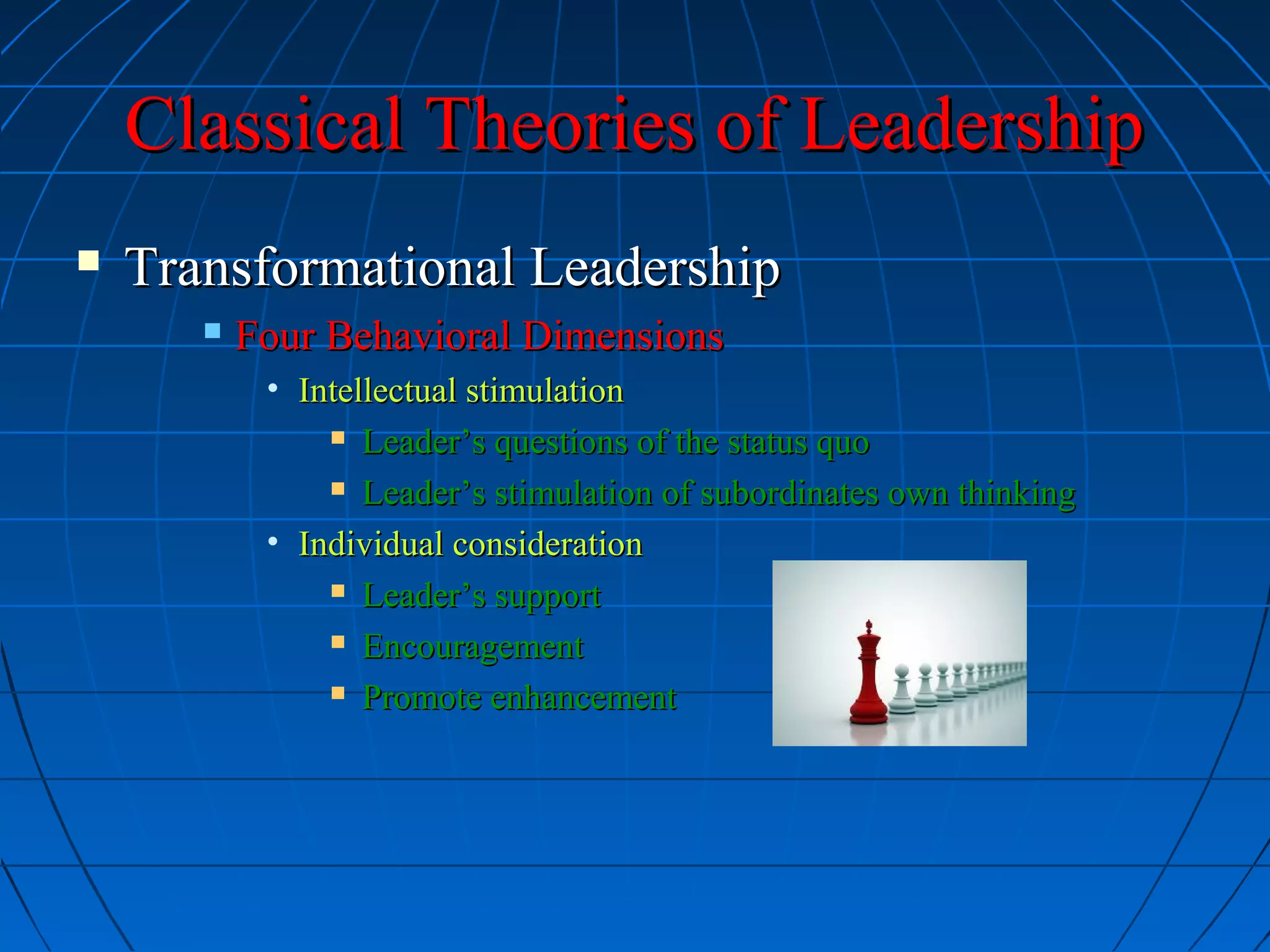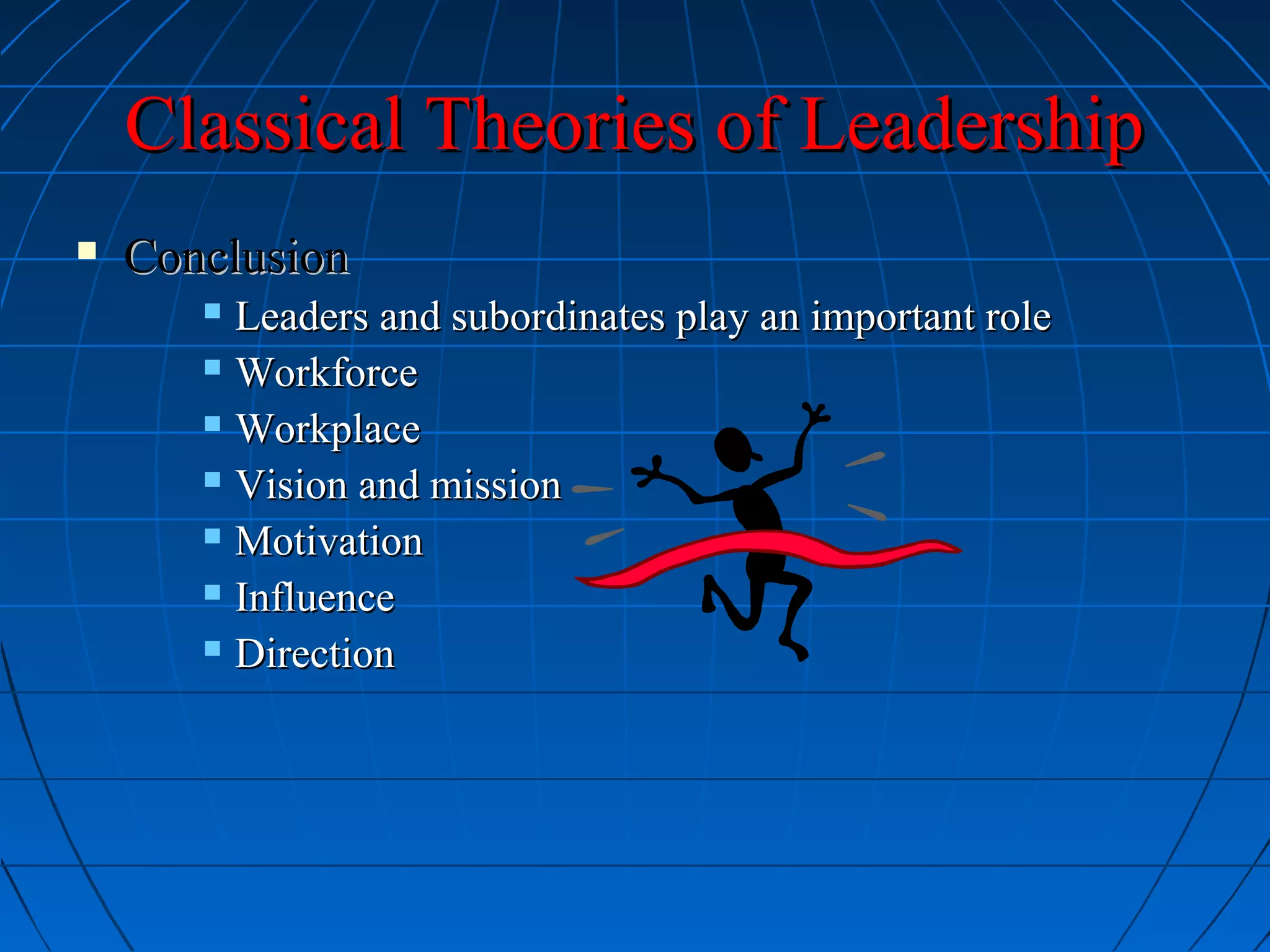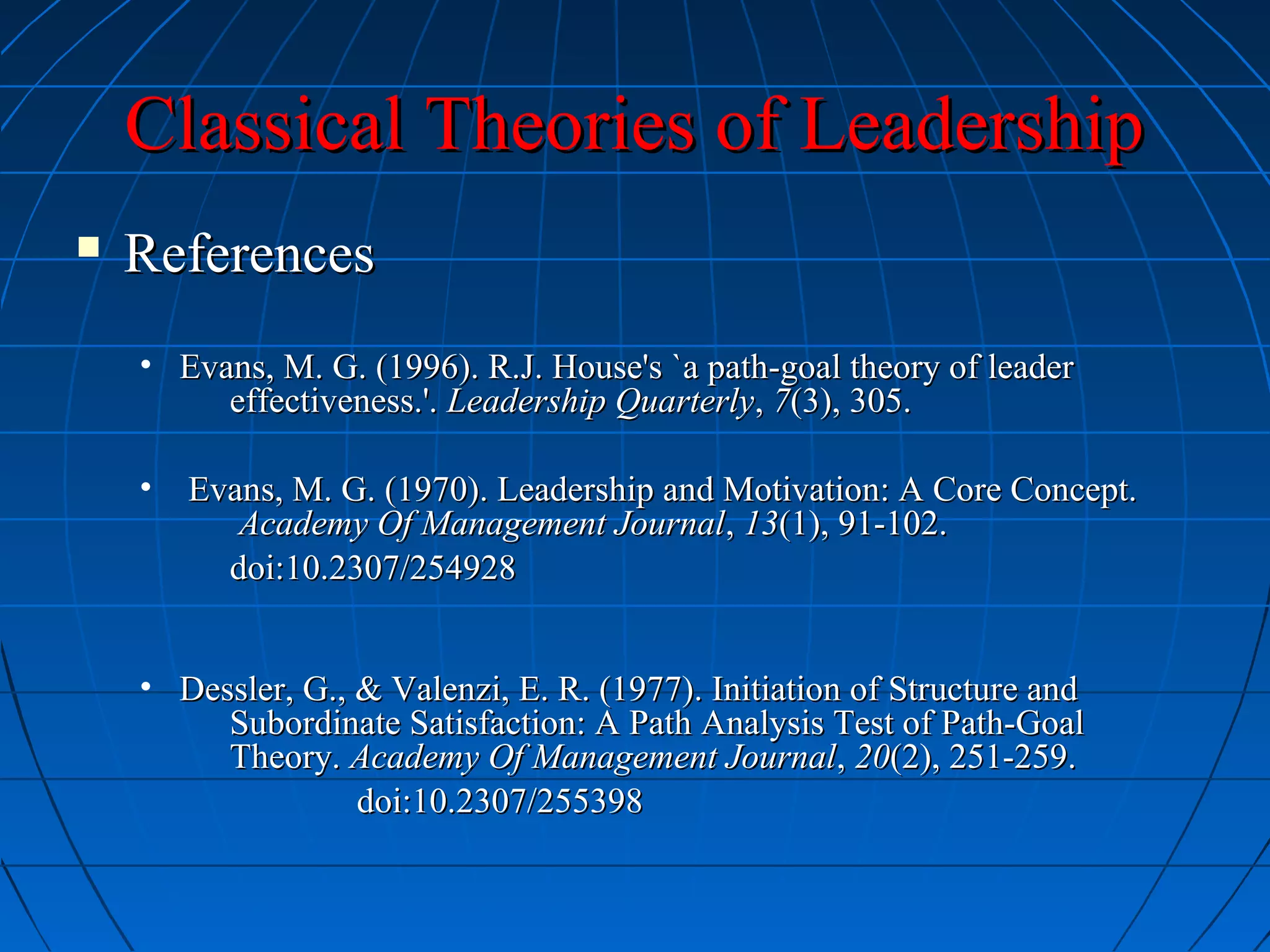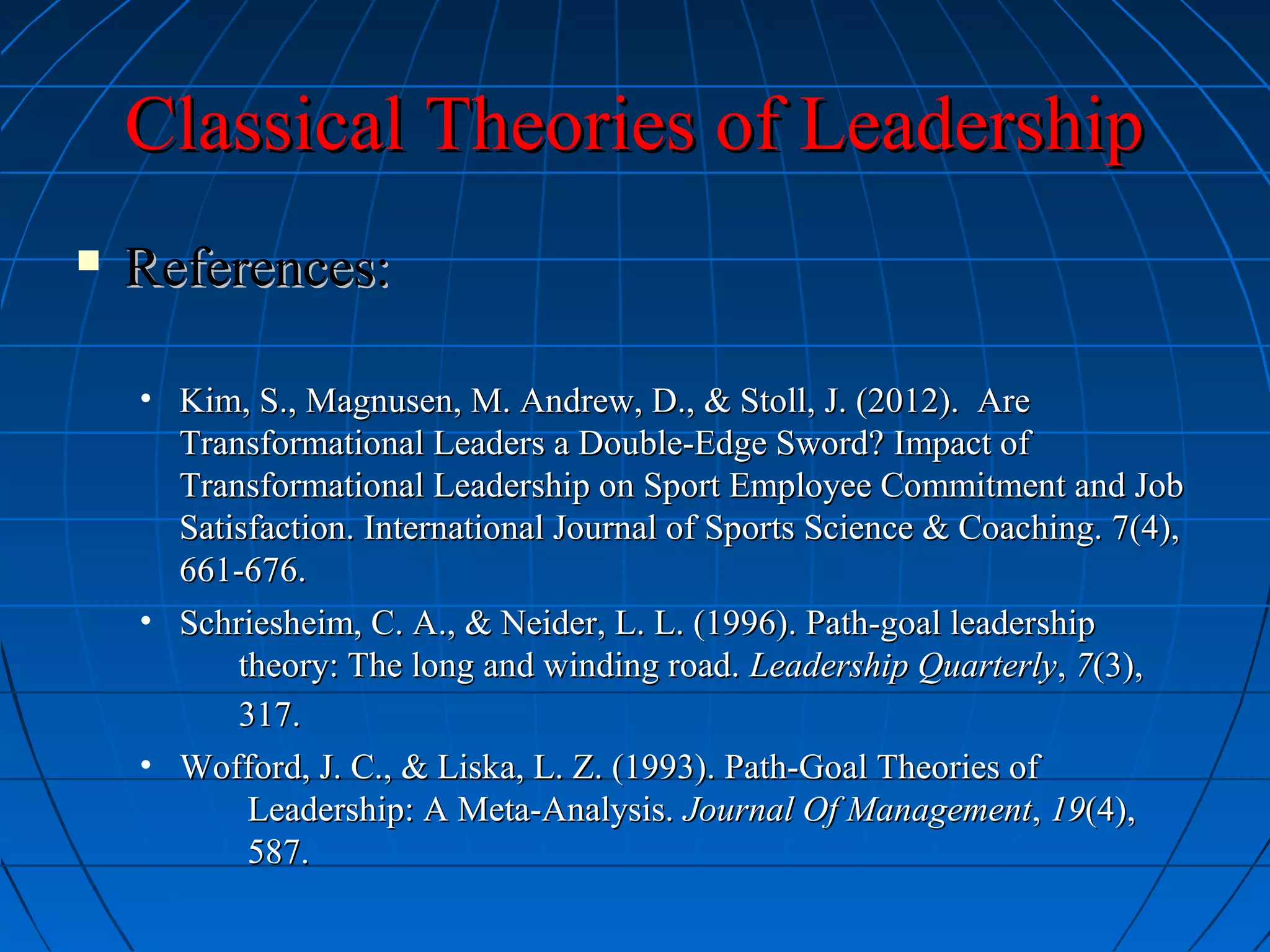This document provides an overview of several classical leadership theories, including:
- Path-Goal Theory of Leadership, which proposes that leaders guide and motivate subordinates to achieve their goals. There are four leadership styles: directive, achievement-oriented, participative, and supportive.
- Charismatic Leadership Theory, which suggests that charismatic leaders influence followers through personal identification, social identification, and emotional contagion.
- Transformational Leadership Theory, which describes leaders as change agents who transform followers' beliefs and motivate them through idealized influence, inspirational motivation, intellectual stimulation, and individualized consideration.
